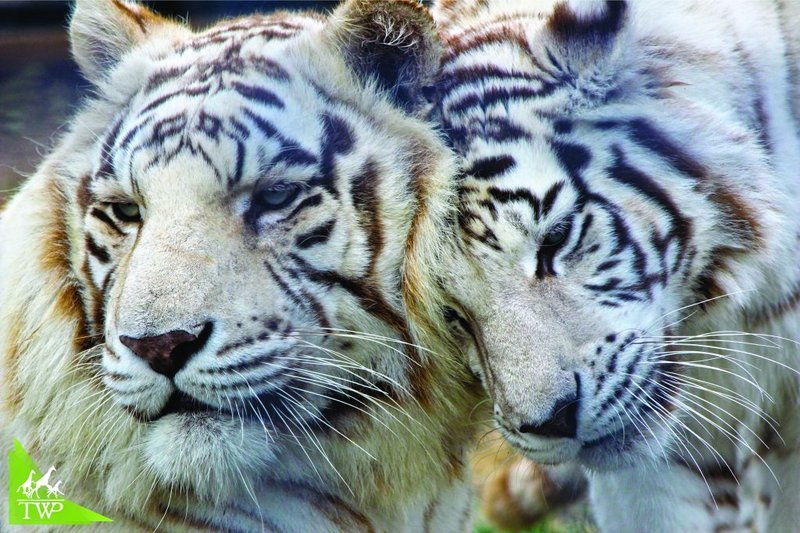
You might find yourself believing some of these tall tales, especially when they’re repeated in movies, documentaries, or even by wildlife enthusiasts. But here’s the thing: separating fact from fiction can help us appreciate tigers more and understand the challenges they face. So, let’s explore some common myths about tigers and uncover the truths lurking beneath.
Myth 1: All Tigers Are the Same
When you think of a tiger, you might picture a single image—the classic orange and black striped coat. But here’s the thing: there are actually several different types of tigers, each with its unique characteristics.
For instance, the Bengal tiger, perhaps the most famous, is known for its vibrant coat and significant population in India. On the other hand, the Siberian tiger, or Amur tiger, features paler fur and larger body size, adapted for colder climates. Then there’s the Indochinese tiger, the Sumatran tiger, and even the South China tiger, which is critically endangered. Each type has specific adaptations that help them survive in their respective environments.
Understanding these differences is crucial. It’s like knowing that not every high-performance sports car is the same; they’re designed for different terrains and purposes. Tigers, too, have evolved to thrive where they live.
Myth 2: Tigers Are Fiercely Solitary Creatures
Many people believe that tigers are loners, strictly maintaining their territory without any social interactions. While it’s true that they are primarily solitary hunters, that doesn’t mean they don’t engage with others of their kind.
Tigers have a complex social structure that involves communication through vocalizations, scent markings, and visual signals. For example, a mother tiger will have interactions with her cubs, teaching them essential skills for survival. Tigers also establish territories that can overlap with others, where they might meet and, sometimes, even play if they are related.
Imagine attending a family reunion; it’s not a daily event, but it’s special. Similarly, tigers may prefer solitude but are not entirely indifferent to their kind. Understanding this can help us appreciate their social behavior better.
Myth 3: Tigers Are Indifferent to Humans
You’ll often hear that tigers pose no threat to humans and that they avoid us at all costs. While they do tend to steer clear of human presence, tigers can become a danger when they feel threatened or are protecting their territory.
In some regions, as tigers lose their habitats and sources of prey, they might wander closer to human settlements. This can lead to dangerous encounters, especially if the tiger is desperate for food. It’s a reminder that while tigers might not actively seek out conflict, they are wild animals with instincts that can drive them to react unpredictably when threatened.
In essence, think of it as living next to a lion’s den. You wouldn’t disregard the possibility that they could come near if they’re hungry. Understanding this relationship is crucial for both tiger conservation and human safety.
Myth 4: Tigers Are Not Endangered
Some people believe that the tiger population is stable or even thriving due to conservation efforts. Unfortunately, this is far from the truth. Tigers are classified as endangered species, and their populations have drastically decreased over the past century.
There are currently estimated to be around 3,900 wild tigers left in the world, and this number continues to struggle against threats like habitat loss, poaching, and the illegal wildlife trade. Conservationists are working tirelessly to protect these magnificent creatures, but the challenges are immense.
It’s like trying to save a sinking ship; every tiny effort counts, but it requires a collective commitment. By spreading awareness and supporting conservation programs, we can make a difference for tigers and their habitats.
Myth 5: Tigers Are Only Found in India
Another common misconception is that tigers are exclusively native to India. While the country is home to a large population of Bengal tigers, they can actually be found in a range of countries across Asia.
Tigers inhabit diverse environments, from the tropical forests of Southeast Asia to the cold, snowy landscapes of Siberia. Countries like Thailand, Indonesia, Malaysia, and China are all part of the tiger’s habitat range. This diversity is crucial for their survival, as different populations adapt to distinct environments.
You might think of it like different styles of cuisine; each country has its flavors that make its dishes unique. Tigers, too, have adapted their behaviors and survival strategies based on where they live. Understanding this global presence can help foster international efforts for tiger conservation.
Myth 6: All Tigers Have Stripes That Are Identical
If you’ve seen a tiger, you might think the stripes on their fur are all the same. However, no two tigers have identical stripes, much like human fingerprints. Each tiger has a unique pattern, which can help researchers identify individual animals in the wild.
These stripes serve multiple purposes; they provide camouflage in their natural habitat and help them conceal themselves while stalking prey. Imagine wearing a camouflage outfit; it’s easier to blend in with your surroundings, right? Tigers rely on their stripes for stealth, making them effective hunters.
Recognizing the uniqueness of each tiger not only highlights their beauty but also emphasizes the importance of each individual in the ecosystem. Every tiger plays a role in the balance of their environment.
Myth 7: Tigers Don’t Need Our Help
Finally, it’s easy to think that nature has a way of balancing everything out and that tigers will be fine on their own. But this couldn’t be further from the truth. Tigers, like many species, rely on healthy ecosystems, and their survival is intricately tied to various environmental factors.
Human activities have drastically changed their habitat, and climate change poses additional threats. By supporting conservation efforts, we help to ensure that these magnificent creatures can continue to roam the earth.
It’s similar to being a part of a community; when one person struggles, it affects everyone. If we want tigers to thrive, we need to make concerted efforts to protect their habitats and support conservation initiatives.
Understanding tigers means peeling back the layers of myths and misconceptions that surround them. They’re not just big cats; they are complex, social, and endangered creatures that deserve our respect and protection.
By breaking these myths, we can come to appreciate the beauty of tigers and the critical role they play in their ecosystems. Remember, every effort counts in the fight for their survival. Let’s be advocates for these remarkable animals and help ensure they thrive for generations to come. After all, the truth about tigers is just as fascinating as the myths that surround them.

